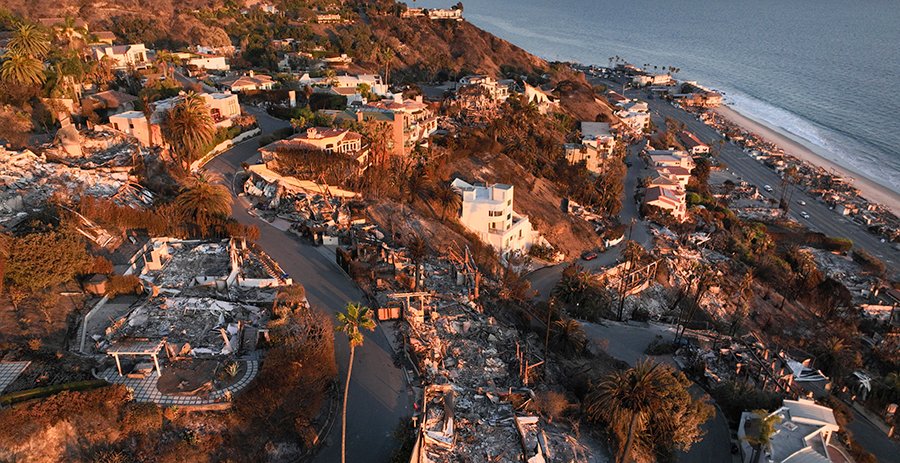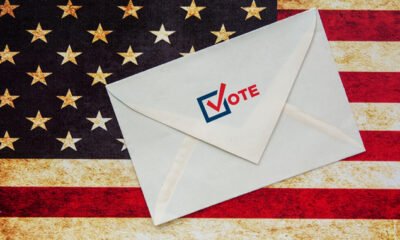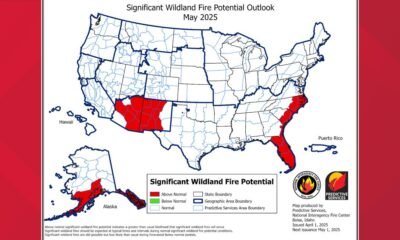Commentary
Arizona’s Wildfire Crisis: Urgent Action Needed Now

As wildfires rage through Los Angeles, leaving destruction and suffering in their wake, Arizonans must acknowledge a stark reality: the risk of similar disasters looms closer every year.
The wildfire threat extends beyond isolated forests. In Arizona, urban sprawl has encroached into wildland-urban interfaces (WUIs)—regions where neighborhoods meet nature. Areas such as Scottsdale, Fountain Hills, Goodyear, and Cave Creek are particularly vulnerable due to thick vegetation that can ignite during extreme heat and prolonged drought. Increasing populations and high winds exacerbate both prevention efforts and emergency responses.
Arizona stands woefully unprepared for a significant wildfire event. Current emergency response capabilities lag behind national standards. While fire departments aim for a four-minute response time 90% of the time, Phoenix averages over nine minutes—a delay that can be critical. Rural districts are often worse off, sometimes facing wait times exceeding an hour.
The deficit in fire service funding reached a tipping point in 2022 when voters rejected Proposition 310, a plan to stabilize funding for over 140 fire districts statewide. This vote left many unable to meet basic service requirements, leading to station closures and reduced personnel. When one district falters, neighboring regions must stretch their resources further, endangering the entire emergency response system.
Political leaders have recognized these issues yet have failed to initiate effective remedies. As a firefighter and President of the Arizona Professional Fire Fighters Association, representing over 8,000 first responders, I have joined many in appealing to the legislature for action. The lack of decisive measures leaves our communities susceptible to severe wildfire risks.
Recent history underscores this threat. In 2020, the East Desert and Ocotillo fires came perilously close to devastating Cave Creek. Only through coordinated efforts were widespread calamities averted. With Arizona’s population booming, the demand for emergency services has surged, while resources remain stagnantly inadequate—a perilous combination.
Arizona’s past holds grim reminders of the wildfire dangers we face. The Rodeo-Chediski Fire in 2002 consumed nearly half a million acres, while the Yarnell Hill Fire in 2013 resulted in the tragic loss of 19 Granite Mountain Hotshots. Such events reveal the dire consequences of insufficient preparedness and resources.
To safeguard communities, Arizona must prioritize funding for fire service infrastructure. Rethinking Proposition 310 and seeking sustainable funding models are necessary steps. Public safety should never be treated as a negotiable budget item; the human cost of inaction is incalculable.
As firefighters, we are dedicated problem solvers answering calls at personal risk. It’s time for Arizona’s leaders to exhibit the same commitment to public safety. After years of discussion, action is essential. Without immediate improvements to fire resources and capabilities, we risk facing catastrophic wildfires that could rival or surpass the devastation seen in California.
The window for deliberations and committees has closed. Arizona needs definitive, urgent action to shield its citizens from escalating wildfire threats. The safety of our state relies on it.
Dan Freiberg has served as a firefighter in Goodyear since 2007 and is the President of the Professional Fire Fighters of Arizona.













![Trestle Management Vice President Marc Vasquez speaks to Rancho Mirage residents during an HOA meeting on March 31, 2025. [Monica D. Spencer]](https://arizonanews.org/wp-content/uploads/2025/04/Rancho-Mirage-Homeowners-Regain-Stability-Yet-One-Crucial-Element-Lingers-80x80.jpg)




